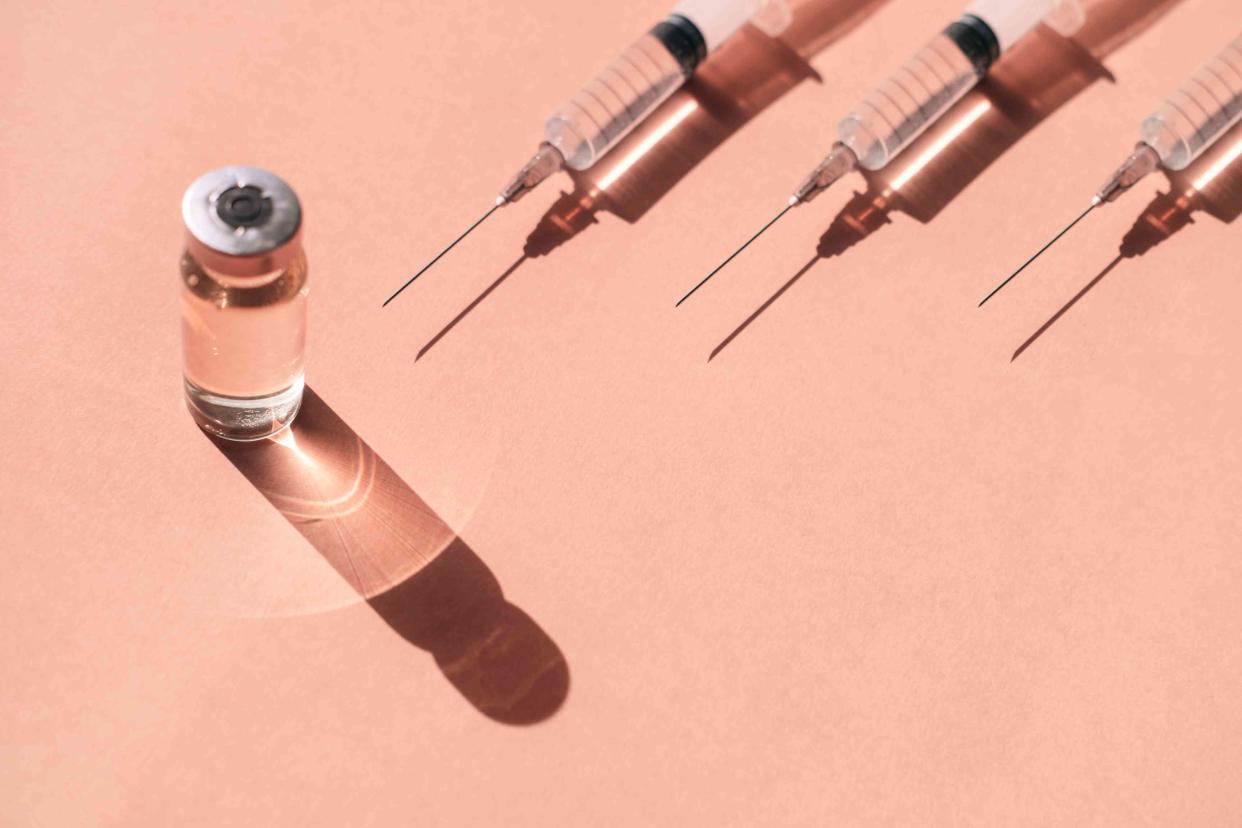How Botox Is Helping People Burp

Anna Efetova / Getty Images
Fact checked by Nick Blackmer
Key Takeaways
For people who can’t burp, the discomfort and pain associated with trapped gas can be severe. A relatively new procedure utilizing Botox can relax the cricopharyngeal muscle in the esophagus, allowing air to escape.
The procedure is quick and safe, resulting in minimal side effects and long-lasting relief as the body trains itself to burp.
An association between R-CPD and emetophobia (fear of vomiting) has been noted.
Impoliteness aside, burping can be satisfying, fun, and funny (ever witnessed sibling burping contests?). But if you’re in the minority of people who cannot burp, the joys of this basic bodily function are unknown.
In non-burpers, trapped air tends to linger in the esophagus and stomach, causing bloating and discomfort, audible gurgling, and often excessive flatulence as the air must be released somehow. For some, these aftereffects are more embarrassing than any public belches could be.
Why can’t some people burp? The culprit is an esophageal muscle called the cricopharyngeus, which lies below the Adam’s apple. This muscle normally is shut tight, opening only to allow swallowing. In most people, it also opens to allow burps to escape. In people who can’t burp, however, the muscle stays closed, and the air stays trapped, leading to what’s known as retrograde cricopharyngeus dysfunction, or R-CPD.
Takeaway
A not yet fully explored phenomenon is that many people who can’t burp also have difficulty vomiting, which is why RCP-D has been linked to emetophobia. Bastian has noticed that not only do his RCP-D patients find vomiting uncomfortable but most also find hiccuping painful.
The good news is that there is a remedy for R-CPD, discovered by Robert Bastian, MD, a physician who runs the Bastian Voice Institute in Chicago. Bastian pioneered a procedure that involves injecting Botox into the cricopharyngeal muscle, enabling it to loosen and allow burps to pass through. Several physicians and clinics have since adopted his method, although practitioners who offer this procedure remain relatively rare.
Bastian first hit on the idea of using Botox when he received an email several years ago from a man struggling to burp. Because Botox is routinely used to enable a variety of muscles to relax, Bastian wanted to try using it in the cricopharyngeal muscle.
“It was just kind of a thought,” he told Verywell. The man who sent the email became Bastian’s first patient to receive this treatment, and he was so delighted with the results that he spread the word in an online forum. Soon, people from all over the country and world were coming to Bastian for their own procedures.
The procedure itself is brief, about 10 to 12 minutes long. Patients must be given general anesthesia, as an endoscope is inserted into the mouth and down to the cricopharyngeal muscle. A tiny needle administers three or four shots of Botox before the patient is awakened.
Bastian said the procedure is “as low risk as you can find,” adding that side effects tend to be mild, such as excessive burping for the first few weeks or sluggish swallowing, which means food must be chased down with a bit of liquid.
“I tell people it’s a little weird the first week or two or three,” he said.
Initially, Bastian thought Botox would simply be a diagnostic tool that might offer a temporary solution to the no-burp problem, but it proved much more durable.
“To my surprise, people would say to me at six months, at eight months, at 12 months, ‘I can still burp,’” he said. He quickly realized the results were lasting not because the Botox wasn’t wearing off, but because once a person regularly experienced the sensation of burping, their bodies were able to do it on their own. “It’s like training wheels,” he said. “People find that little hook to the burp, and they practice it.”
Takeaway
Bastian said four out of five of his patients are permanently cured after one procedure, and one out of five needs a second procedure to see long-term results.
For Emma Svalsted, 24, the RCP-D procedure has been life-changing.
“Ever since I was a child, I struggled with discomfort on a daily basis after every meal, snack, and drink,” the Pomona, California resident told Verywell. “If I drank soda, it would feel like balloons were suddenly inflating in my stomach and throat. If I ate too fast, I would be in so much discomfort I would have to lie down.”
Svalsted spent more than a decade visiting doctors and undergoing testing to determine the cause of the problem, but no one seemed to connect her inability to burp with her suffering. After learning about R-CPD on social media, she scheduled the Botox procedure. Now, more than a year later, she continues to be able to burp naturally. “I have confidence that my once-debilitating symptoms are out of my life for good,” she said.
Another satisfied patient is Britney Lipps of southern Indiana. Proclaiming her stomach gurgles “obnoxious,” Lipps, like Svalsted, sought treatment in various corners without success. After having the Botox procedure, the 32-year-old veterinarian marvels that she can exercise, walk her dog, and eat meals that include dessert without doubling over in pain: “Heck, I can even have a soda if I want!”
Read the original article on Verywell Health.

